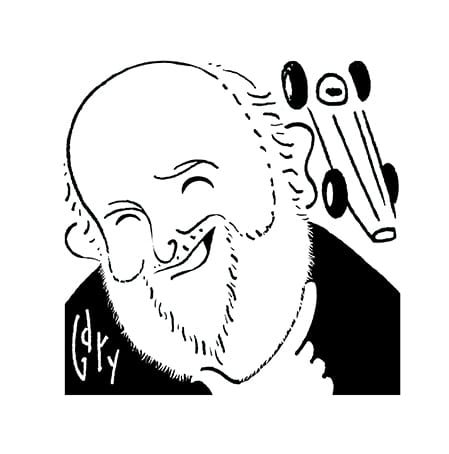Doug Nye: "You'd expect Harry Potter as motivator to conjure up greater optimism..."

This summer’s precipitous collapse in competitiveness of Ferrari has been not only a demeaning disappointment but one accompanied by startlingly public expressions of hopeless surrender from team principal Mattia Binotto. One would expect Harry Potter as motivator to have conjured up greater optimism…
But it hasn’t looked that way in this 90th anniversary year for the Scuderia. Enzo Ferrari had been the Modena-based Alfa Romeo dealer and through the early 1920s had shown such promising form as a racing driver he had been given an Alfa works drive in the 1924 French GP. But he’d suffered a nervous breakdown after initial practice. Alfa Romeo thought enough of their faltering friend to continue supporting him, back in his Modena comfort zone.
His self-confidence recovered through the later 1920s. He resumed race-driving in 1927, rebuilding his local image. In 1929 he was barely 31. Two of his Alfa customers were Ferrara-based textile manufactures, brothers Augusto and Alfredo Cania to who gravitated towards city bars favoured by like-minded motoring men. There, just as at Brooklands, ‘The Right Crowd’ meant anyone motor-minded, regardless of wealth or social class.
In 1929 Alfredo Caniato ordered a new unsupercharged Alfa Romeo 6C-1500 from Ferrari’s office on Bologna’s Via Monte Grappa. One of Caniato’s friends, Bruno Biagi, president of the RACI in Bologna, encouraged him to enter it in the Circuito delle Tre Province race on September 1. He finished sixth. Third overall was another relative novice, Mario Tadini, a patrician Bologna-based sports wear manufacturer. Caniato and Tadini were eager for more of this intoxicating sport…
Four weeks later Baconin Borzacchinidrove the Bologna-built 16-cylinder Maseratito break the world’s 10km speed record on along straight at Cremona, achieving 152.9mph.
The Automobile Club di Bologna, needing little excuse for a booze-up, threw a lavish banquet to celebrate. Caniato and Tadini found themselves seated beside Enzo Ferrari and the puppeteer expounded his vision of the best way for gentlemen-sportsmen, such as they, to go racing “Why don’t we join together to form a team?” he ventured. “We shall be able to race for minimum expense; I shall look after the organisation. We’ll do everything seriously.”
The younger men listened intently to this established racer with his inside line to Alfa Romeo. They proved receptive, agreed to finance the project and Ferrari took them to meet the Alfa Romeo board in Milan. It was both the best of times and worst of times. The Wall Street stock market had just crashed. The Great Depression loomed. Alfa Romeo’s top brass were anxious about the cost of continued competition yet wedded to its promotional allure. Ferrari’s plan could relieve them of much burden while maintaining a sporting presence for the marque. These moneyed men could pay the bills. Mr Ferrari took his friends to Bosch, Pirelli and Shell — with the same grateful reaction.
While in Milan, Ferrari – MrFixit – also took his new friends to dinner with champion driver Giuseppe Campari. The roly-poly opera-singing racing star was invited to drive for the new team whenever available. He accepted, thus guaranteeing for himself a full season of potentially lucrative competition, insulated from Alfa Romeo’s variable commitment to entering races. Ferrari, meanwhile, could offer otherwise less-than-receptive race promoters the great Campari, who always drew the crowds.
On December 1, 1929, Modena solicitor Enzo Levi supervised creation of Societa Anonina Scuderia Ferrari. Mr Ferrari’s former Garage Gatti workshop became the Scuderia’s first home.
A small fleet of six Alfa Romeo 6Cs was gathered and a Citroën van bought to carry team equipment. Ferrari’s mechanics would prepare, transport and run the cars. All the contributing sporting clienti had to do was to arrive at the right time and their cars would be there, ready for a great day’s sport.
And through the Scuderia Ferrari’s maiden season of 1930 –90years ago – the team contested 22 events, winning eight outright, backed by myriad good placings. Each one earned money. Mr Ferrari agreed a percentage split of start, prize and bonus cash that could vary from one driver to another, but the amateur clienti would always end up paying more than they could ever earn. Their reward was the excitement of racing in professional spheres–fame by association.
“Any Ferrari fan will hope there’s a steely leader of men screaming”
A grand dinner — first of many such annual occasions — was organised at Modena’s San Carlo Hotel to celebrate that maiden season. It was evidently a raucous party, over which Mr Ferrari presided, surrounded by his peers and equals, by star drivers Campari, Nuvolari and Arcangeli, and, of course, by his supportive clienti. Mr Ferrari, the manipulator of men, had begun to roll…
In later years – from 1947 as a manufacturer–Ferrari’s racing successes would wax and wane. Presently the latter is the case. In adversity, when The Old Man was running the show, the screaming from his office would have been heard across Maranello. One hopes that, behind a 21st-century promotional security cloak – “nothing to see here” – any Ferrari fan will be praying that there’s a steely, determined leader of men screaming loud…
